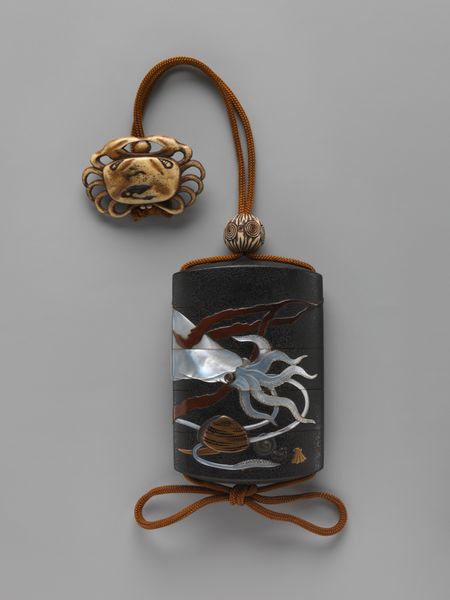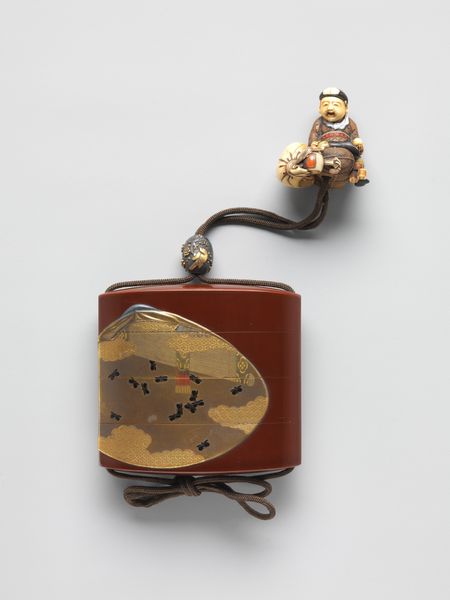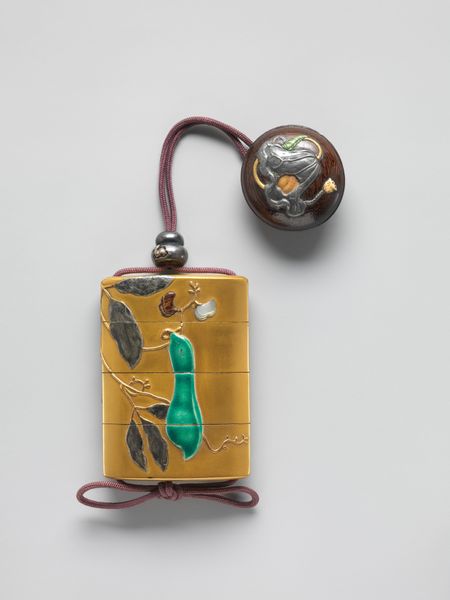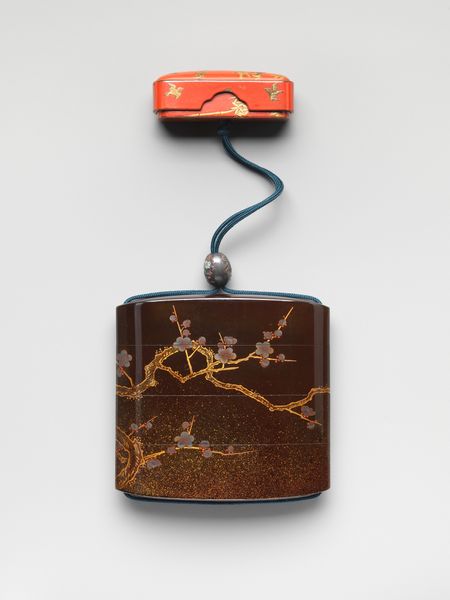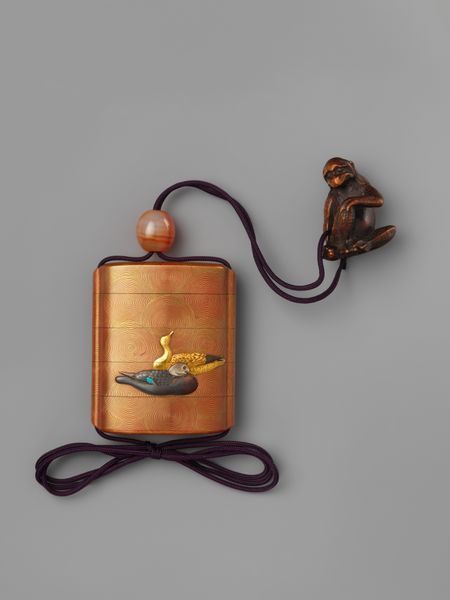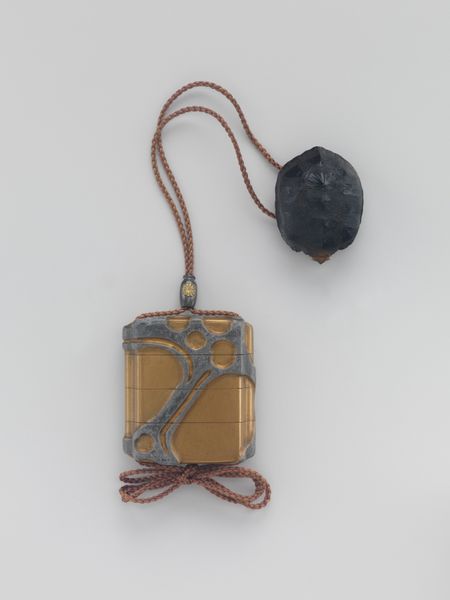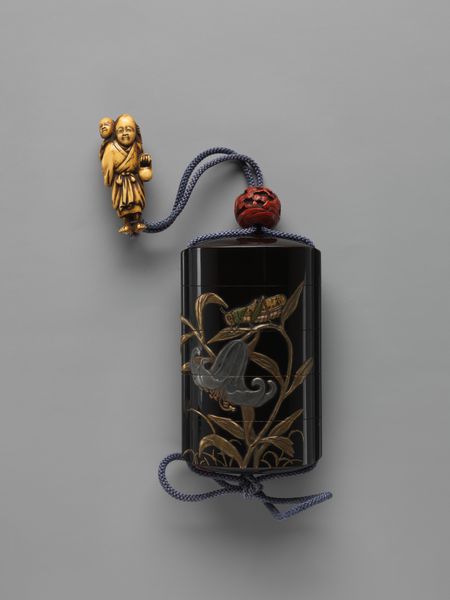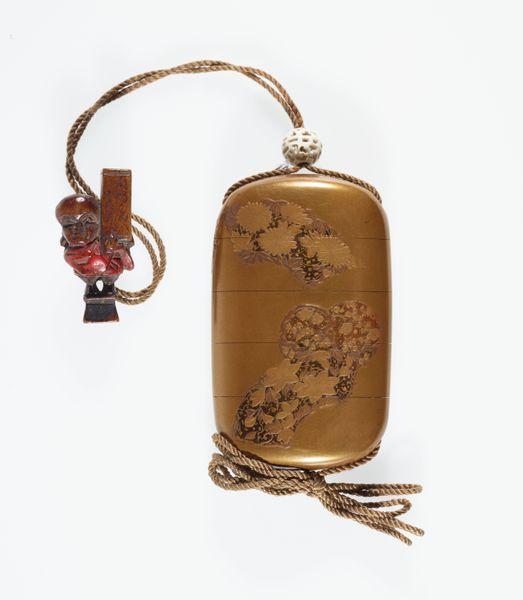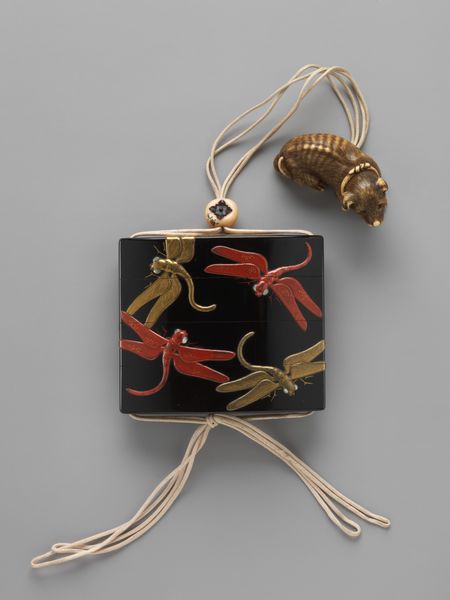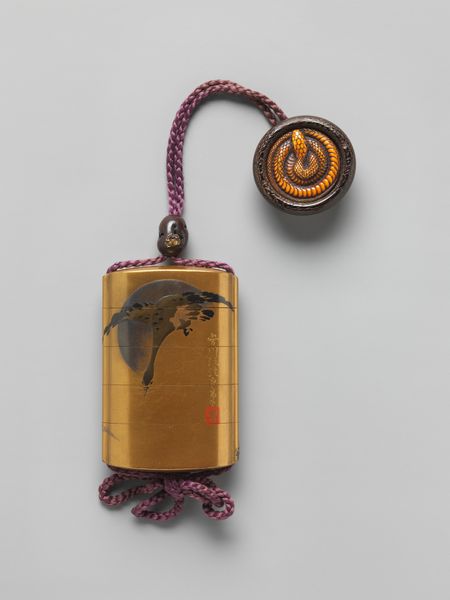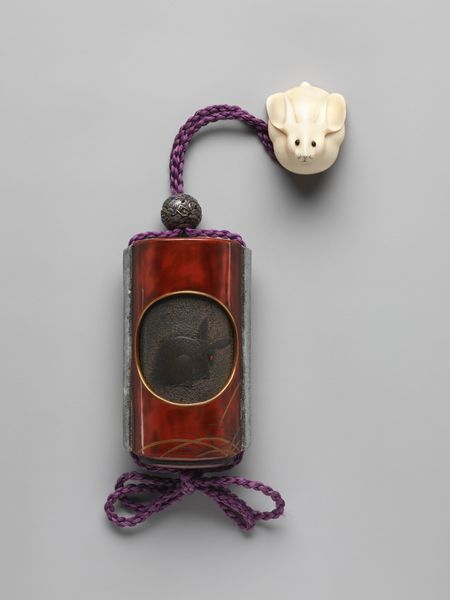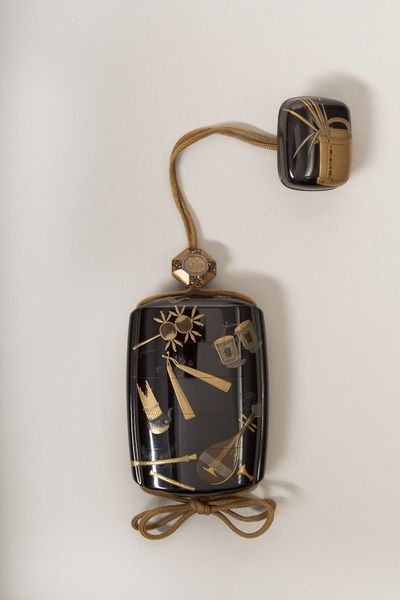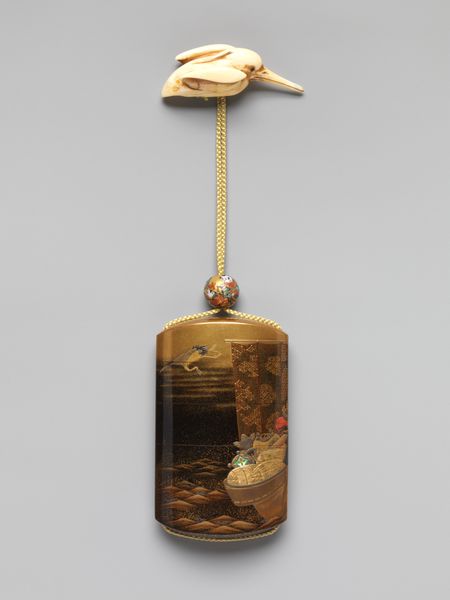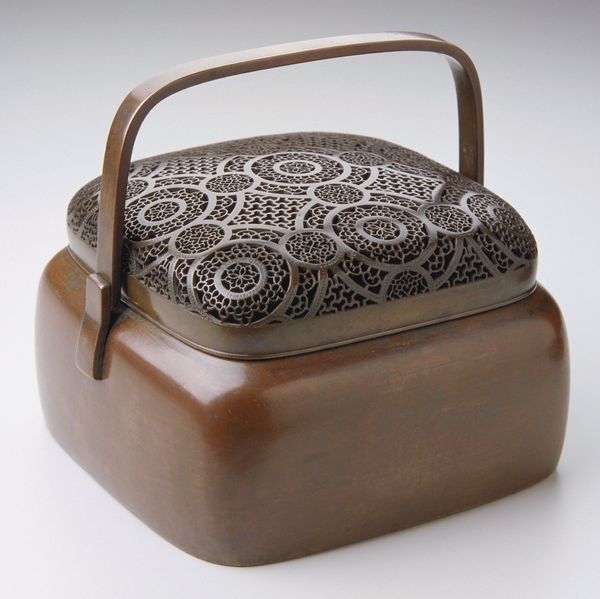
Wide three-case inro showing plovers in flight above waves c. early 18th century
0:00
0:00
gold, wood
#
asian-art
#
gold
#
japan
#
wood
#
decorative-art
#
miniature
Dimensions: 2 5/16 × 2 1/2 × 7/8 in. (5.87 × 6.35 × 2.22 cm)
Copyright: Public Domain
Editor: Here we have an inro, a Wide three-case inro, made around the early 18th century by Koma Kyūhaku. It's currently housed at the Minneapolis Institute of Art. What strikes me immediately is the beautiful juxtaposition of the wood and gold, and the very fine craftsmanship involved in making something so small and intricate. How do you approach a piece like this? Curator: Looking at this inro, I see a fascinating interplay between material value and labor. Gold, of course, has intrinsic value, but here it's meticulously applied to wood, a far more common material. The labor invested in creating this miniature scene elevates the object beyond mere function. Consider the socioeconomic context: who had the resources to commission such a piece, and what kind of craftspeople were involved in its production? How does the object embody status and power? Editor: So, the materials themselves tell a story about the culture that created this object? Curator: Precisely. Think about the acquisition of these materials. Where did the gold come from? How was the wood sourced and processed? What does that tell us about trade routes, resource control, and artistic patronage in 18th-century Japan? This isn't just decorative art; it's a physical manifestation of economic and social relationships. We also have to wonder if the artist chose this approach over using pure gold to show restraint in artistic expressions of luxury during the period. Editor: I never considered the practical aspect, all the getting and making. The little details like the string show the hand so clearly. Curator: And don’t forget the cultural weight given to those specific plovers and wave patterns chosen for decoration here, which goes into the economic symbolism we discussed. Editor: Thinking about it this way gives me a whole new perspective on the artistry involved. I guess I had this division in my mind between functional and artistic creation before. Curator: I agree, and examining pieces like this inro lets us collapse these divides, and shows that the practical components are worthy of deep study and that it shows the complex economic structure of that time.
Comments
minneapolisinstituteofart about 2 years ago
⋮
A number of different motifs are fit onto this compact four case inrō, beginning with a “plover over waves” design in the style of the Rinpa artist, Ogata Kōrin (1658–1716). The plovers are executed in chunky mother-of-pearl inlays and takamaki-e, and fly over mountainous waves that simulates the look of pewter sheeting—an element favored by Kōrin and his predecessor, Hon’ami Kōetsu (1558–1637). Oversized inlays are used for the depiction of the water wheel and rock basket as well, creating an artfully cluttered composition. The imagery of plovers over waves is a common Japanese literary convention, which seems to have first appeared in the Kojiki, an 8th-century compendium of Japanese origin myths. The scene generally connotes the struggle to surmount the difficulties of life.
Join the conversation
Join millions of artists and users on Artera today and experience the ultimate creative platform.
